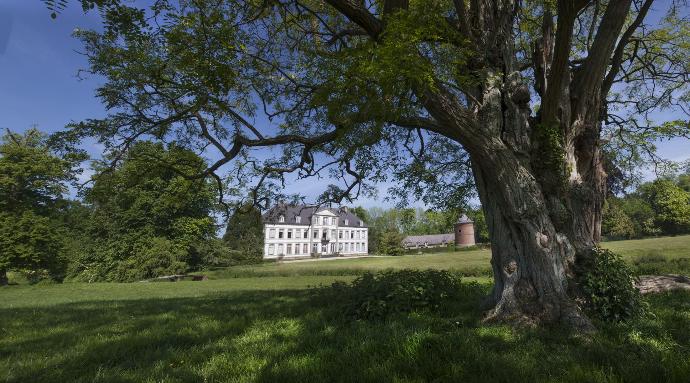ATTRE CASTLE
Nestled on the banks of the Eastern Dender and surrounded by a splendid landscaped park, ’Attre Castle is an exquisite 18th-century manor house. A fine example of neoclassical architecture, it is one of the rare Belgian châteaux to have preserved its original décor and furnishings. Recognised as a site of exceptional heritage in Wallonia, it remains the property of the de Meester de Heyndonck family.
PRESENTATION
Attre Castle, built in 1752 on the foundations of an older structure, was commissioned by Count François-Philippe Franeau d’Hyon, Count of Gommegnies. His son, François-Ferdinand, designed the interiors in the Louis XV style. As a chamberlain at the court of Archduchess Maria Theresa of Austria, he frequently hosted Archduchess Maria Christina of Austria and her husband, Count Albert of Saxony-Teschen, between 1782 and 1788.
In 1814, the château passed to the du Val de Beaulieu family and later, in 1910, to the de Meester de Heyndonck family. It is a remarkable example of neoclassical architecture, featuring a symmetrical and understated façade, a triangular pediment, and two lateral pavilions.
Its 17-hectare landscaped park includes several notable features, such as a 17th-century dovecote and an impressive artificial rock formation with a 33-meter-high tower and underground galleries.
BELOEIL CASTLE
Eight centuries ago, surrounded by its moats, Beloeil Castle was initially a medieval fortress. Over the centuries, it transformed into a pleasure castle and has been owned by the Princes of Ligne since the 14th century.
PRESENTATION
Acquired by the Ligne family through inheritance from the Condé in the 14th century, Beloeil Castle has undergone several architectural transformations, evolving from a defensive stronghold into a more comfortable aristocratic residence. While some foundations and towers still bear witness to its military past, the estate has been designed to reflect the elegance and refinement of its occupants.
The interior houses a remarkable collection of artworks from the 17th to the 19th century, including furniture crafted by the greatest French cabinetmakers of the 17th and 18th centuries, and an impressive library containing 20,000 volumes.
The estate is also renowned for its French-style garden, designed in 1664 and meticulously maintained according to its original layout. This 25-hectare park, harmoniously blending water and greenery, shade and light, is recognized as an exceptional heritage site in Wallonia.






